 |
||
|
||
| ||
After tiny budget Zen Stone and Zen Stone Plus, Creative launches a more advanced product, giving no second thought about its name: Creative Zen. That's not the first mp3 player from this company with this name, so you'd better read the review of the discontinued Zen I — you will see how far the progress has gone. This product is positioned as a multi-functional multimedia mobile device with an expansion slot, designed to entertain its users. We've finally laid our hands on the new product. 
A small box has a transparent round window to show the player. The box also contains standard headphones from Creative, a very short USB- miniUSB cable, a pile of paper manuals, and a disc with proprietary software. The box itself is tiny, so you cannot possibly expect more. It's a pity: this product could have been bundled with nice accessories that please their users. The device looks very nice: the front panel is glossy, the rear panel is rough and nice to the touch.  The player is small, but convenient to hold in your hand. Controls are designed for one-hand operations, as they concentrate to the right of the 2.5” display. The four-way rectangular button is used for navigation, there are also two rocking buttons (one above and one below). There is an SD/SDHC slot on top - these memory cards may expand capacity of the player to 16 GB. Zen itself comes with 4, 8, or 16 GB of memory. Thus, you can upload 32 GB of multimedia files maximum, which is very good for such a small device.
The player syncs with a computer with a USB- miniUSB cable. This is good news, because if you lose a cable, you can always buy a new one in any computer store, it's cheap. The port is on the right side, together with a slider that turns on the player and locks the keys. A standard 3.5 mm audio jack is also placed there. When the player is turned on, you can see a blue LED under the slider. The device turns on rather slowly, and it does not go to sleep mode when you turn it off. That is, if you turn the player off and then on (in half a second), it will get ready just as slowly. You can specify a period of idle time, after which the player goes off. Its controls are not very convenient. The central button is deeper than the surrounding buttons, so you may accidentally press them. That's a subjective factor, of course. Thumbs differ in size, after all :) You control the device with your right hand, and you cannot rotate the screen by 180°. Bad luck for left-handed persons, so they'll have to get used to it. Nevertheless, it's convenient to hold the player in your hand. At least, we have no gripes with it. PC Sync
Windows detects the player as an MTP device, which indicates that you may have to use multimedia libraries, like Windows Media Player, to replenish music content. It may disappoint many users, who are used to working with their players as with regular flash drives. But that's how engineers decided it. A lot of manufacturers add MTP support to their devices, but some of them give you a choice between MTP and UMS modes. We are given an illusion of the usual Explorer-style mode by the "MTP device" option in the My Computer window (you can change this name). This option allows to upload music and other media content to your player almost like in the UMS mode. What differs is that the device is not accessible to third-party file managers (without plugins). On the other hand, data of all types can be copied into the player, but only into the Data folder. You may organize files into subfolders there. It must be noted that the device is detected as MTP only if you have WMP 10 or higher installed. Otherwise, built-in memory of the player will be inaccessible. So you will be able to use only a card reader in the USB mode. The uploaded multimedia content will still be available to the player, if it's supported, of course.  It all would have been great, but we've found one irritating problem: files on the flash card are accessible only from the corresponding menu, that is they are not included into the library. Besides, only built-in memory is accessible, when the player is connected to a computer in the regular mode. Access to a flash card is granted only when the player works in the flash drive mode. What did engineers think? This feature does not look like a bug either. You don't have to install all software from the bundled disc to work with the player. As for us, we installed all the programs, which took us almost an hour. Many new features were added on the desktop and in the startup folder, mostly useless and slowing the system down. However, if you have basic understanding of Windows, you can easily disable or uninstall them. What you really need is Zen Media Explorer. We've described this program many times. It can be used to upload multimedia files to your player. It's more convenient to upload music to your player this way. Besides, this program converts tags to the appropriate format. Audio playback
Let's start with supported formats. The new Zen supports AAC. This format offers better audio quality for the same file sizes as MP3. Only the .m4a modification of this format is supported — not copy protected. There also exist .m4b and .m4p versions. The former is developed for audio books with bookmarks, the second version allows copy protection. Along with this format, the player also supports standard file types — MP3, WMA, and WAV PCM (not a standard format, but it's supported by some Creative devices). The player sorts music by categories, which is not good for those users who don't organize their collections. To facilitate your experience with this player,you should have a well structured media library without extra symbols in tags. Otherwise, for example, "Britney Spears" and "Spears Britney" will be different artists. The same concerns symbols and letter cases: the player differentiates between "RHCP" and "Rhcp". There are just a few categories to sort music by: album, artist, and genre. And you can display all songs in one list. There are also separate categories for voice recordings and bookmarks. There is also a DJ category, which is present in all Creative players. It uses statistics to play the most popular, rarely accessed, etc songs. The shuffle option is also there. Let's proceed to the playback screen. As usual, the screen displays names of an artist, album, and song. This information is taken from tags. Sometimes, users have problems with tags. So you should use the proprietary program to upload music to the player - it converts tags into the necessary format. You will also see a progress bar, elapsed and remaining time. That's all. The other information about a given file will be displayed, if you choose to see the details. In this case, you will also see the year, track length, playback counter (how many times a given song has already been played), and genre. The upper rocking button acts as a context menu. It can give access to file info (described above) and other file operations.  First, bookmark. You can set up to ten bookmarks for different or the same file. This function will be popular among people, who like audio books. The context menu also allows to show the list of albums from the current artist. It comes in handy sometimes. Playback settings are also hidden in the menu — so you won't have to dig deep.  Playlists. Some people think that this function is useless, others think that it's really necessary. So let's describe this feature in more detail. You can create a playlist on your computer or on the player. You can specify a name in both cases. But the player allows to type only Latin characters and a few symbols. However, this is not very important. It's more convenient to create playlists on your computer, of course. All it takes is to drag-and-drop necessary files into a target window. After you create a playlist, the program suggests to create another. We described it in previous reviews. The process of creating a playlist on a player is confusing. Previous Zen products offered a clear procedure. But it's modified in this player, so we had to experiment with it a little. You have to add songs, albums, or artists to a temporary list. Then open the "Now playing" list and choose "Save as playlist" in the context menu. It's a strange procedure, but it's working. Audio quality of the Zen player is just like in the previous Zens — if you use good headphones, of course. The stock headphones are a regular Creative product shipped with all modern Zens. You may try and improve audio quality with an equalizer. Just open the player settings — it's not available in the playback mode. Fortunately, music does not stop playing, when you are navigating the menu. There are eight presets plus one custom 5-band set. You can also specify a maximum volume level, plus you can enable an equalizer-independent option to raise low frequencies. Results of objective tests in RMAA 6 are published below: For MP3
Detailed
report
|
| Frequency response (from 40 Hz to 15 kHz), dB |
+0.30, -0.21
|
Good
|
| Noise level, dB (A) |
-88.1
|
Good
|
| Dynamic range, dB (A) |
88.1
|
Good
|
| THD, % |
0.0052
|
Very good
|
| Harmonic distortion + noise, dB(A) |
-69.6
|
Average
|
| Intermodulation distortion + noise, % |
0.014
|
Very good
|
| Channel crosstalk, dB |
-86.9
|
Excellent
|
| IMD at 10 kHz, % |
0.015
|
Very good
|
| General performance |
B
|
Very good
|

The device can play MPEG-4, WMV, MJPEG, and DivX/XviD video files. You can convert video to these formats with the proprietary program included into the bundle. Maximum video resolution - 320×240. If you try to open a file with a higher resolution (even if the codec is supported), the player will pop up a warning, and the file won't open. This resolution is too small for video playback on a computer, so movies usually come in higher resolutions. That's why you'll have to convert video files very often.

You can indeed watch movies on this player. We especially like bright colors of the display. The main problem is display size. However, this option is a bonus to music playback and high capacity of the new Zen, so it's not of primary importance. There are plenty of true video players on the market. For example, popular Archos devices. The main advantage of these players is wide or large displays for comfortable video playback, for example when you are on the go. Frequent video conversions (format and resolution) also speak of the secondary nature of this function in this Zen player — it takes about 45 minutes to convert a movie.

All video files must be stored in the Video folder in built-in memory. You can categorize files into folders here. If you have many video files, you may navigate them by typing the first letter of a file name (only Latin characters are available). There are no special settings for video playback.
Anyway, this function works well, it's just not very convenient to fast-forward video files: for example, if you want to watch a movie from the middle, you will have to press and hold the forward button to accelerate the slider. Besides, you cannot set a bookmark. The progress bar appears after you open a file and when you press any button during playback. You can choose "full-screen" or "stretch" modes in the context menu for video files, which resolution differs from 320×240.
 |
 |
Like any good media player with a color display, Zen can show photos. Besides, this player is equipped with a very good display — it shows 16.7 millions of bright colors. The only supported format is JPEG. It can also open progressive JPEG files. But to all appearances, it shows only a preview. However, this preview is sufficient for the Zen display. As always, we can start a slide show with various options and effects. You can rate photos from 1 to 5. That is, nothing changed since Zen Vision M. You can also look up info about the camera, flash, date and time of a photo. The photo browser is quite convenient — it shows thumbnails instead of file names.
 |
 |
Like all other Zens, the new player is equipped with FM radio. It cannot record radio stations, though - it was disabled because of copyright lawsuits. You can bookmark 32 radio stations — both in auto search mode and in manual mode. Each station can be named (Latin characters only). Reception quality is no different from other products — regular FM radio, no better or worse than the others.
 |
 |
This device cannot compete with professional voice recorders, of course. But it may come in handy in a critical situation. Sound is recorded in ADPCM WAV format, 16 kHz, 64 Kbps — these are standard settings, which cannot be modified. On the whole, this function is good enough to record voice within a short range. Maximum record length is 10 hours.

Just like previous products, this player has an organizer. We'll not describe it in detail (as it was examined in previous reviews), we'll provide just an outline. It comprises a calendar, task list, and notes. The last two functions work only via PC sync. You can manage tasks with Creative Sync Manager. This program is also used to sync Microsoft Outlook contacts.
According to the manufacturer, this device can play 5 hours of video or 25 hours or music. Quite good results. Besides, the player demonstrates similar results in practice. You can charge the player from a USB port in your computer, but you can also buy a car or an AC adapter. So don't hesitate to take the player with you on a trip – there is plenty of storage space and a mobile charger.
We are a little disappointed by the implementation of the SD/SDHC slot, but our impressions are generally positive. This product is actually an overhauled Zen Vision M, which was discontinued not long before Zen was launched. Now that memory is getting cheaper, it's not expedient to use hard drives in portable players anymore. So Creative was one of the first to use advantages of flash memory in its products. The resulting product is very good, but it can still be improved.
Write a comment below. No registration needed!
|
Article navigation: |
| blog comments powered by Disqus |
| Most Popular Reviews | More RSS |
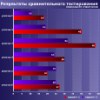 |
Comparing old, cheap solutions from AMD with new, budget offerings from Intel.
February 1, 2013 · Processor Roundups |
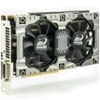 |
Inno3D GeForce GTX 670 iChill, Inno3D GeForce GTX 660 Ti Graphics Cards A couple of mid-range adapters with original cooling systems.
January 30, 2013 · Video cards: NVIDIA GPUs |
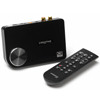 |
Creative Sound Blaster X-Fi Surround 5.1 An external X-Fi solution in tests.
September 9, 2008 · Sound Cards |
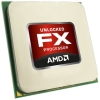 |
The first worthwhile Piledriver CPU.
September 11, 2012 · Processors: AMD |
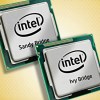 |
Consumed Power, Energy Consumption: Ivy Bridge vs. Sandy Bridge Trying out the new method.
September 18, 2012 · Processors: Intel |
| Latest Reviews | More RSS |
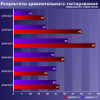 |
Retested all graphics cards with the new drivers.
Oct 18, 2013 · 3Digests
|
 |
Added new benchmarks: BioShock Infinite and Metro: Last Light.
Sep 06, 2013 · 3Digests
|
 |
Added the test results of NVIDIA GeForce GTX 760 and AMD Radeon HD 7730.
Aug 05, 2013 · 3Digests
|
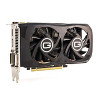 |
Gainward GeForce GTX 650 Ti BOOST 2GB Golden Sample Graphics Card An excellent hybrid of GeForce GTX 650 Ti and GeForce GTX 660.
Jun 24, 2013 · Video cards: NVIDIA GPUs
|
 |
Added the test results of NVIDIA GeForce GTX 770/780.
Jun 03, 2013 · 3Digests
|
| Latest News | More RSS |
Platform · Video · Multimedia · Mobile · Other || About us & Privacy policy · Twitter · Facebook
Copyright © Byrds Research & Publishing, Ltd., 1997–2011. All rights reserved.